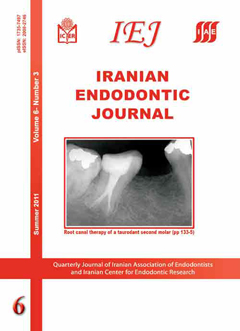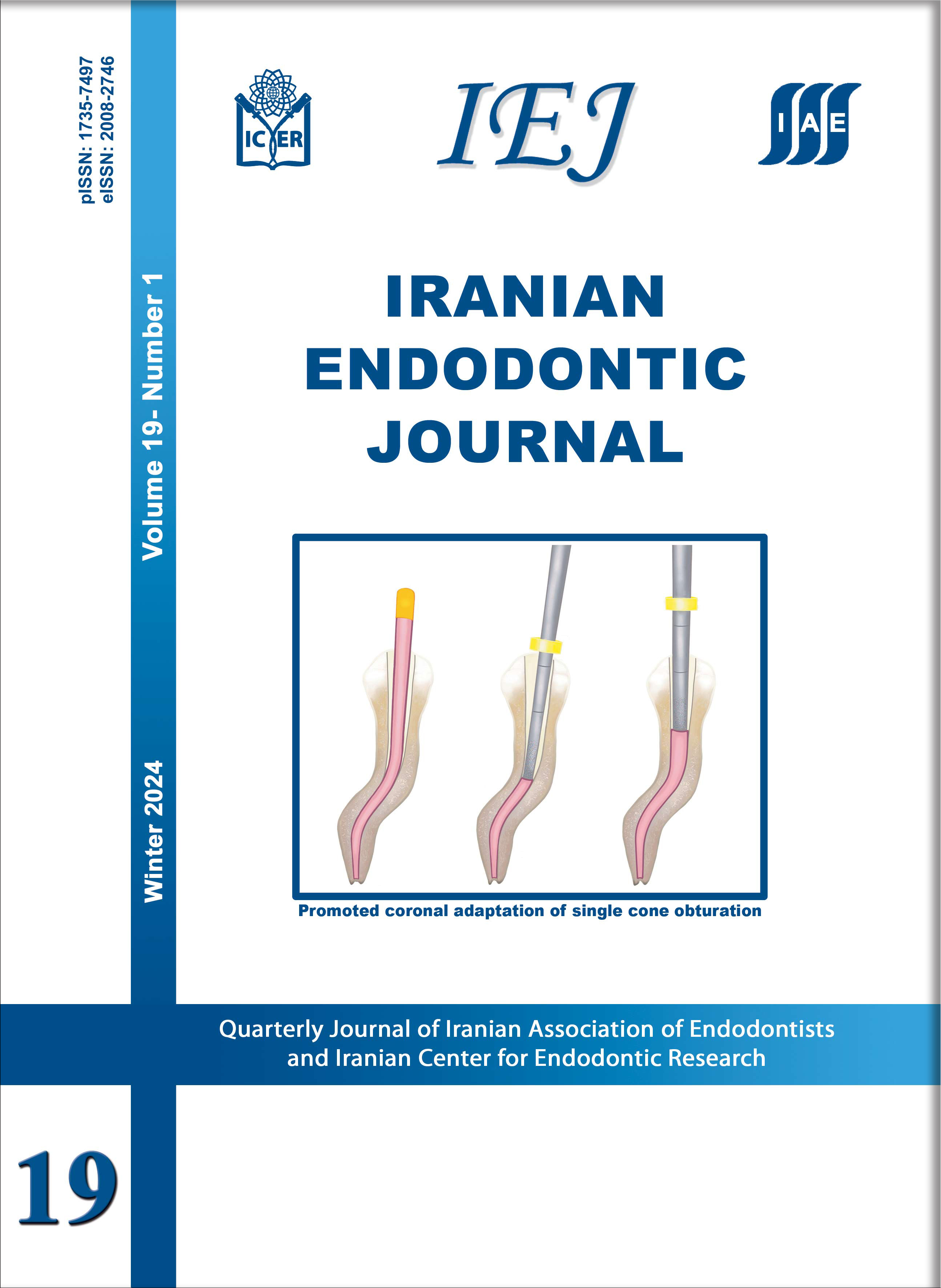The antibacterial effect of calcium hydroxide on intraluminal and intratubular Enterococcus faecalis
Iranian Endodontic Journal,
Vol. 6 No. 3 (2011),
18 June 2011
,
Page 103-106
https://doi.org/10.22037/iej.v6i3.2098
Abstract
Introduction: Root canal treatment is based on elimination of intraradicular microorganisms. Calcium hydroxide Ca(OH)2 is the most widely used material for canal dressing, However, Enterococcus faecalis has been reported to be resistant bacteria in persistent apical periodontitis . The purpose of this study was to evaluate the efficacy of Ca(OH)2 on the elimination of intraluminal and intratubular E. faecalis. Materials and methods: 36 human unirooted teeth contaminated with E. faecalis. 30 Specimens in experimental group which were treated with 10% Ca(OH)2, or sterile water as a positive control (n=6). Specimens from each experimentagroup were randomly divided into 2 equal subgroups: A (n=15) had specimens incubated and sampled at 1 day; and B (n=15) had specimens incubated and sampled at 7 days. For each group, paper points were used to obtain the intraluminal E. faecalis and Gates Glidden burs to obtain intratubular bacteria either after one day or one week. Samples obtained from these root canal preparations were analyzed for bacterial load by counting the number of colony forming units (CFUs). Results: A significant decrease in the number of CFUs was observed after dressing with Ca(OH)2 after 1 week camper to 1 day either in sampling with paper point or Gates Glidden. Additionally, no differences were observed between the antimicrobial properties of Ca(OH)2 on intraluminal and intratubular E. faecalis. Conclusion: significantly higher antimicrobial efficacy are measured by the number of CFUs after Ca(OH)2 medication after 1 week. Ca(OH)2 showed the same antimicrobial efficacy on intraluminal and intratubular E. faecalis.
- calcium hydroxide
- Enterococcus faecalis
- intracanal dressings
How to Cite
- Abstract Viewed: 302 times
- PDF Downloaded: 196 times




